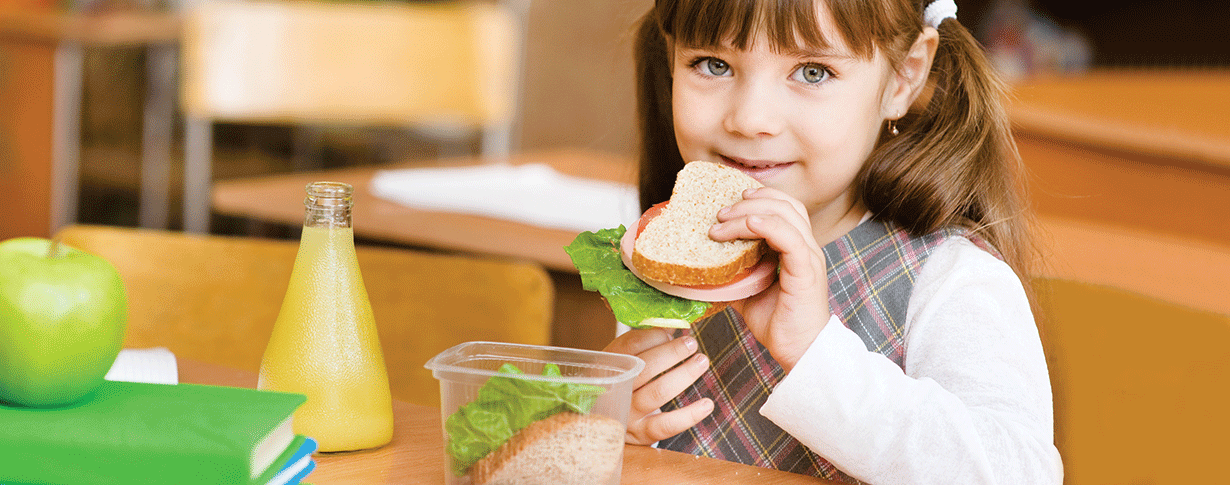Nutrition for Children in Winter
With the onset of the winter months, there are changes in the lifestyle of children as well as adults. Children who go to school or kindergarten stay away from their homes for a long time, on the one hand, they frequently encounter infections in crowded environments, on the other hand, their diets may be disrupted.
It is known that the nutritional habits and physical activities to be acquired during play and school childhood have a very important role in protecting the child against chronic diseases that he may encounter in his next life, as well as affecting his current health. For this reason, parents need to monitor what their children eat when they are out and about, as well as at home, and at the same time teach them the right and balanced eating habits as a good example.
The purpose of healthy nutrition; Nutrition should be the amount of food that each child needs, taking into account the balance of carbohydrates, fats, proteins, vitamins and minerals, and allowing the child to make a choice.
Since each child’s genetic characteristics and physical activity are different, the amount of nutrition may be different. The important thing is to provide quality and balanced nutrition and the normal development of the child.
Care should be taken for children to have 3 main meals and meal times should be clear.
Unlike adults, children tend to snack between meals. Children should be taught healthy food items that they can snack on during breaks or with their friends, they should be taught to distinguish between useless or even harmful foods appearing in advertisements and healthy foodstuffs, and a good education should be given on this subject. If the child has an increased activity in sports or other ways, the foods (rice pudding, ayran, kefir, milk, etc.) that he will seek to balance the energy lost here should be ready at home.
Breakfast: Due to the parents’ work and the child’s going to school, the habit of breakfast usually disappears or it is in the form of insufficient snacks. However, the role of breakfast is very great for the school success and healthy development of the child. At breakfast, 25% of the daily calories should be given in a balanced way. Milk, fruit, cheese-egg sandwich or toast, molasses, honey are good options.
Lunch: Meals offered by the school to the child should be reviewed. If food is taken from the house, it should be meat-egg sandwiches, vegetables and fruits, paying attention to the storage conditions. If it is necessary to buy food from outside, the child should be educated about buying healthy food.
Dinner: When kids leave school, they can often be hungry and don’t want to wait for dinner. Snack times should also consist of the right foods, and in this case, they should be allowed to have less food at dinner.
The physical activities and energy expenditure of play and school-age children increase a lot. Therefore, high-calorie foods should be offered.
Caution should be taken to take foods containing calcium for bone and dental health, iron for the prevention of anemia, and zinc for strengthening the immune system.
Nuts such as almonds, walnuts, hazelnuts can be given with raisins or figs, or mixed with pudding or fruit salad. Tahini molasses can be a good option both in terms of calories and because it is rich in zinc and iron. Children who sweat and lose water due to active movements should not be offered ready-made fruit juices, but should be taught to drink squeezed fruit juices, cold milk or ayran. Because of its high phosphorus content, cola is a beverage that can be harmful to bones and should be avoided. However, if there is a need for snacking, cheese sandwich, meatball bread, sesame bagel with cheese can be recommended. When you want to eat dessert, sesame, walnut, hazelnut and milk based desserts or fruits should be offered.
Fats are the main source of energy, and long-chain fatty acids also have important functions for brain development. Approximately 30% of the calories in children should be met from fats. Extra virgin olive oil and organic butter should be preferred if possible as healthy oils. When serving pasta and rice, try to mix it with cheese, minced meat or yoghurt. Vegetable dishes should be with meat or minced meat. It should be remembered that legumes are an important source of protein. Fish should be on the table once or twice a week.
The consumption of vegetables, fruits, milk and water should be encouraged, and children should be informed about the drawbacks of ready-to-eat foods, foods containing additives, chips, candies and fast food.
It is necessary to pay attention to the fact that the food is fresh and organic. In winter, consuming citrus fruits, kiwi, pomegranate and plenty of greens, especially rich in vitamin C, can prevent colds and so on. It is very useful in preventing upper respiratory tract infections.
The diet of the parents is very effective on the diet and desire of the children. This issue should not be overlooked.







